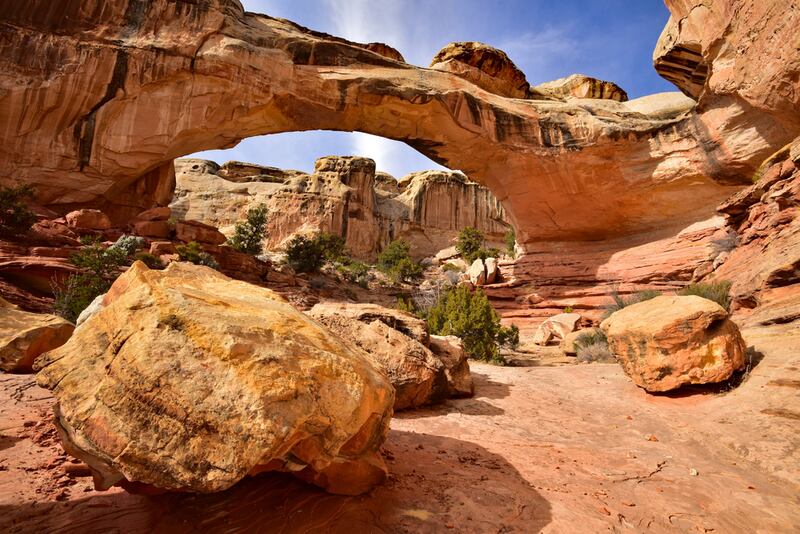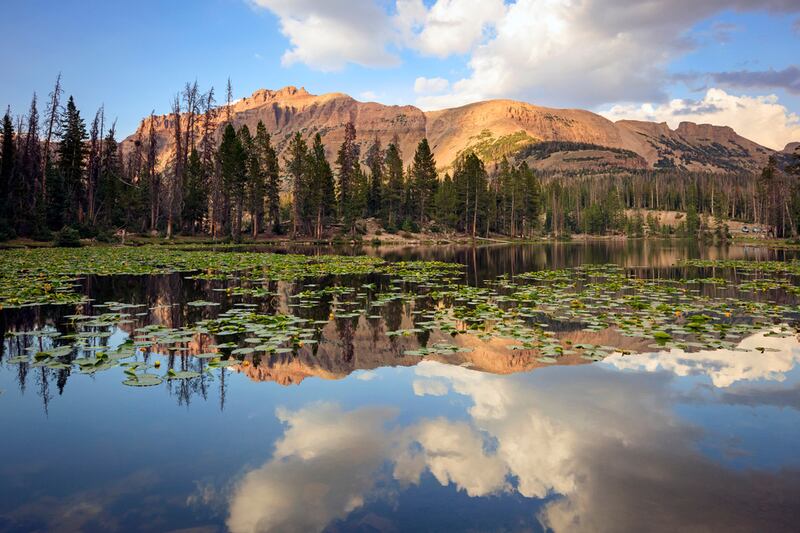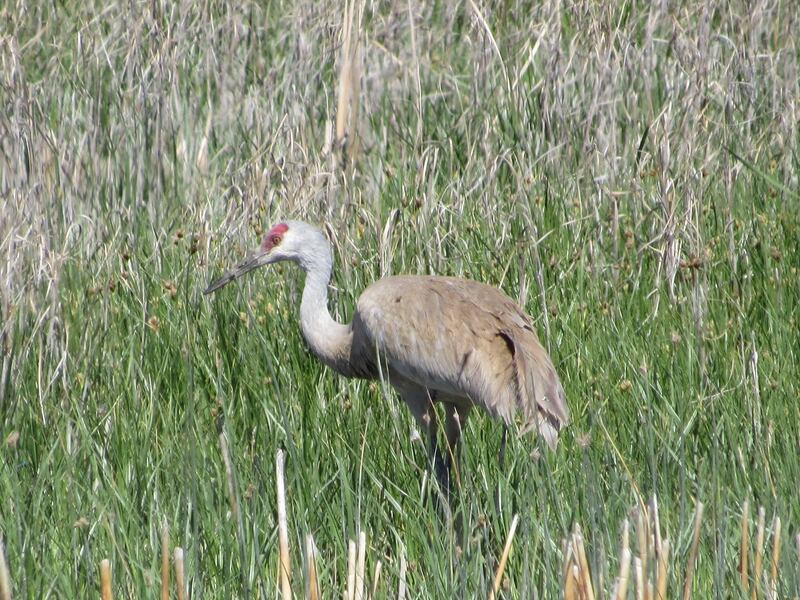One of the great things about Utah is its ability to offer a diverse variety of landscapes—all within a short, few-hour drive. From mountains, rivers, streams, deserts, red rock, salt flats, and more, Utah is one of the best places in the world to live if you want to get out of the house and explore.
To help you know where to go, these seven Utah road trips are some of the best you’ll ever take, especially in the spring—so pack up the family and go!
Note that some roads might still be closed for winter so check accordingly.
Highway 12 - Utah’s “All-American Road” - Torrey/Panguitch
One of Utah’s best road trips is among Scenic.org’s 46 All-American Roads in the United States—the Scenic Byway 12, going from Torrey to Panguitch.
Receiving an All-American Road designation is a top honor bestowed upon scenic byways by the United States Department of Transportation.
“To receive an All-American Road designation, a road must possess multiple intrinsic qualities that are nationally significant and have one-of-a-kind features that do not exist elsewhere,” said the United States Department of Transportation.
With various rock formations, landscapes, and scenery, this is a road trip the family will never forget.
If you start from Salt Lake City, it’s about a 3.5-hour drive to Panguitch or to Torrey, so no matter where you want to start and end on Highway 12, you can’t go wrong!
Capitol Reef National Park
One of the most underrated places in Utah is Capitol Reef National Park. Often left standing in the shadow of the other Mighty Five national parks in Utah, Capitol Reef is one of those hidden gems that upon visiting, you’ll wonder why you’ve never been there before.
This scenic drive and national park offer unique cliffs and rock formations, as well as some of the most rewarding hikes you can find in southern Utah. The National Park Service says the scenic drive through the park is about an hour and a half roundtrip. If you want to drive up to some trailheads, you’ll be driving on some dirt roads, so make sure your car can handle a few bumps.

Bicentennial Highway & Trail of the Ancients - Southeast Utah
Located in the southeast section of Utah, State Route 95 is one of the best roads in Utah to see some world-class scenery.
Running through the northern section of Glen Canyon, the road takes you into a convergence of amazing sights including Bears Ears National Monument, Natural Bridges National Monument, and several dinosaur and archaeological sites.
State Route 95 also forms part of the Trail of the Ancients National Scenic Byway, notes Utah.com. This ancient trail takes you through Anasazi Country and continues into Colorado, Mesa Verde, and Canyons of the Ancients National Monument.
Utah.com suggests taking five days to explore this area, but shorter and longer trips can also be enjoyable. You can start at any point along the route.

Mirror Lake Scenic Byway - Northern Utah
A classic Utah road trip, Mirror Lake Scenic Byway showcases northern Utah’s beauty like few other byways.
Starting in Kamas (be sure to eat some of the great food in Kamas while you’re there!), the byway takes you through farmlands, meadows, and rugged Uinta mountain peaks. You’ll eventually climb higher than 10,000 feet in elevation to Bald Mountain where you can take in some stunning views.
This byway is currently closed but it usually opens around Memorial Day so keep an eye on the opening status on the Forest Service website to be one of the first to experience this beautiful drive. Once open, take the drive in a day or spend multiple days driving, exploring, camping and hiking.
Bear River Migratory Bird Refuge drive
Spring is an amazing time to take the Bear River Migratory Bird Refuge drive west of Brigham City. The U.S. Fish and Wildlife Services says the 36-mile round trip drive is open year-round from sunrise to sunset. Spring is nesting season and many species of migratory birds are returning to the refuge to raise their young.
Because the vegetation isn’t as dense as it will be later in summer, you have the opportunity to see a wide variety of baby birds or even some unusual mating behaviors.

Additionally, you can learn more about the birds and the wetlands as you listen to an audio tour of the area while you drive through. It’s narrated by local 7th and 8th graders, so you’re sure to find it charming. For more information about the audio tour, visit the Fish and Wildlife Services website.
According to the Fish and Wildlife Services, you can expect to see birds such as the American white pelican, white-faced ibis, black-necked stilt, tundra swans and more. If you plan to get out of your vehicle, you’ll want to have insect repellant. The refuge is notorious for swarms of insects.
Nebo Loop - Northern Utah/Utah County
Another classic, the Nebo Loop byway winds through the Uinta National Forest between Nephi and Payson and is a must-see, says Utah.com. Getting on this loop early in the spring means seeing wildflowers and meadows emerging from their long winter sleep.
Climbing above 9,000 feet, the Nebo Loop is famous for its overlooks, wildlife, and Devil’s Kitchen Geologic Interest Site. Similar to southern Utah’s red rock, Devil’s Kitchen is almost like a miniature Bryce Canyon and is stunning in its contrast to the green mountains surrounding it.
This road is another that can be completed in a few hours or can be explored over several days. Either way, the Nebo Loop (and Mount Nebo, the tallest mountain in the Wasatch Range), is a must-see if you’ve never been.
For more information on the Nebo Loop, visit the Forest Service website.
Little Sahara
Vastly underrated, western Utah, is one of the most interesting and otherworldly areas of the state. Specifically, Little Sahara Recreation Area is one offroaders and explorers alike will love. The Bureau of Land Management’s website says, “Little Sahara Recreation Area (LSRA) is 60,000 acres of sagebrush flats, juniper-covered hills, and free moving sand dunes located in Juab County, Utah.”
Only a two-hour drive from Salt Lake City, you can see some stunning desert landscapes and climb up some fun dunes. The BLM website says the area is formed from a now-dried-up river that left sand and quartz deposits all over the land which now form the sand dunes.
You can certainly just drive through the area, taking it all in, or you can set up camp for the night in one of the hundreds of open campsites. See the BLM website for more details.
No matter where you choose to road trip in Utah, you won’t be disappointed. From north to south, east to west, Utah is home to some of the most beautiful, diverse, and unique landscapes in the United States.
* Robert DeBry is retired from the practice of law

